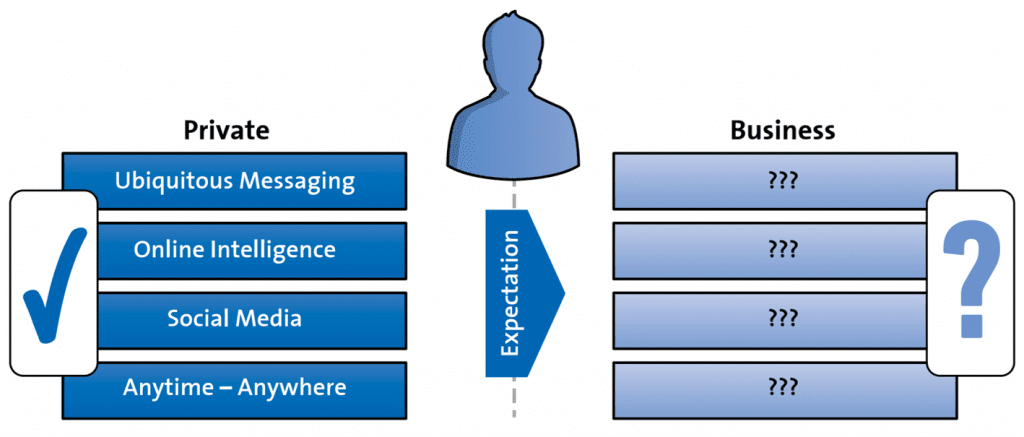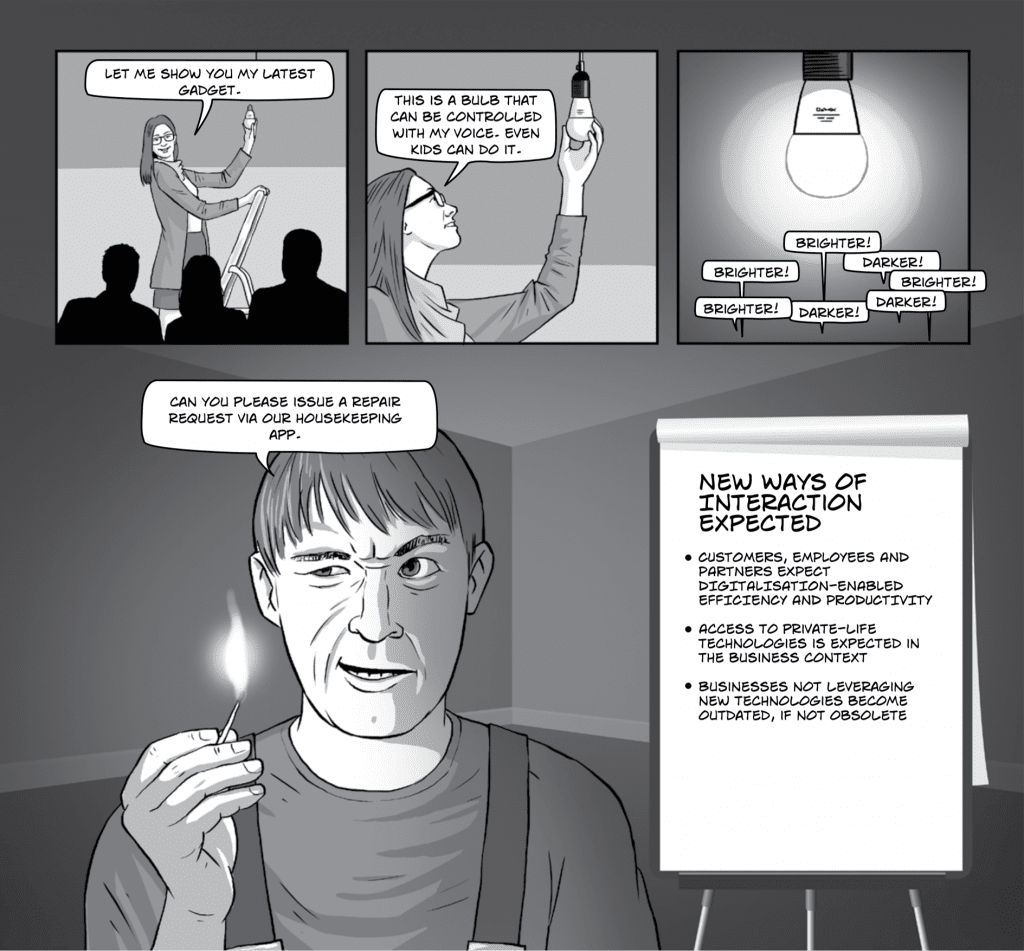Over the past couple of decades, all our private lives have been significantly affected by the advent of new technologies, with everpresent access to PCs, mobile phones, smartphones, tablets and, very soon, virtual reality devices. We can surely expect this trend to continue and we will no doubt be eager to reap the convenience offered by such consumer electronics, albeit often ignoring their impacts on data protection. Businesses have capitalised on this trend and have used these new devices as effective channels to communicate with their customers.
For example, while a few decades ago it was avant-garde to do one’s banking online, customers today demand digital access as a core feature of banking services. The drive for new technology-based offerings often takes the form of pull from stakeholders (i.e., customers, employees and partners).

Access to the new technologies has become so pervasive that stakeholders simply expect services to be accessible anytime and anywhere.
Customers typically access online services during small breaks in the course of their day (for example, a spare quarter of an hour during a commute), often outside working hours. Consumer expectations of intuitive service–user interfaces have been shooting up as a result of ground-breaking user interface shapers (e.g., Apple, Google, Airbnb, Uber). Above all, the user interface must be simple. (‘User interfaces are like jokes: if you need to explain them, they are bad.’)
Customers want to be empowered in the way they interact with businesses – they expect direct data input features, direct transaction execution from their private device, and online access to personal/transactional data that enterprises keep on them. The complexity of offline servicing, as personal as it might be – having to visit service locations, outlets or branches in person, or having to make telephone calls to receive services or purchase products – is no longer desirable. Such expectations lead to a perception that the competition is outpacing businesses that are not leveraging new technologies.
All stakeholders in a business – employees, partners and customers – have become accustomed to the new ways of interaction in their personal life.
They are expecting, and in fact are often actually missing, similar convenience in their business life. Not taking advantage of such communication channels results in a company being interpreted as out-of-date by its stakeholders.
Even more serious, however, is the typical behaviour of digital natives to try out a specific service just once. If it does not provide the expected responsiveness, features, intuitive usage etc., the user rapidly switches to another service provider. Such a shift in the expectations of market participants can be seen in respective studies. A good composition of various studies can be found in the online article ’32 customer experience statistics you need to know for 2017’.[1] Improving customer experience is seen as the single most exciting digital business opportunity, with customer retention as the main motivator for such improvements. This study clearly points to the increased importance of understanding respective expectations. Inconsistencies in the enterprise’s presence across multiple channels lead to customer frustration with the enterprise’s service. A clear focus of expectations is the mobile channel, as is self-service help. Mary Meehan notes typical digital customer expectations: convenience, personalisation, speed, efficiency, empowerment, seamlessness, ease, authenticity and affirmation.[2] Quite an agenda for a digitalisation programme!
From an employee perspective, BYOD (bring your own device) has become a pervasive model – employees expect to be able to use private devices in the corporate environment for a variety of reasons. They are looking for the convenience of a familiar personal technical environment to support them in their business life.
They expect the powerful IT tools they rely on in their personal space (access to knowledge on the Internet, use of social media, etc.) to be available at work as well in order to boost personal productivity.
As a result, enterprises often struggle to provide similarly powerful features on the company’s desktop computers. Employees want to have broad access to the full data spectrum (transactional and analytical) necessary to effectively execute their business tasks without the data boundaries traditionally encountered in the workplace. Simultaneous access to private and business files, mail, phone and social media becomes normal and is therefore expected.
A similar trend can be seen in the expectations of business partners, with a move towards more tightly yet dynamically connected B2B enterprises, forming new on-demand ecosystems at the extreme, a more mature and open connectivity between enterprises, and the widespread break-up of value chains into value networks. The connectivity between the various enterprises in a value network is expected to be mostly online rather than offline – i.e., online transaction processing across company boundaries in digital trust chains rather than an offline exchange of files.
An open yet secure exchange of business information is expected, which supports the trend towards the formation of ecosystems, where the interconnection of digital enterprises leads to completely new joint business models, which can also be brought to market significantly more rapidly.
______
[1] Kulbyt, T.: ‘32 customer experience statistics you need to know for 2017’, SuperOffce, 2016.
[2] Meehan, M.: ‘Customer Expectation Trends: They Want It All. So Get Out Of The Way’, Forbes, 2015.



